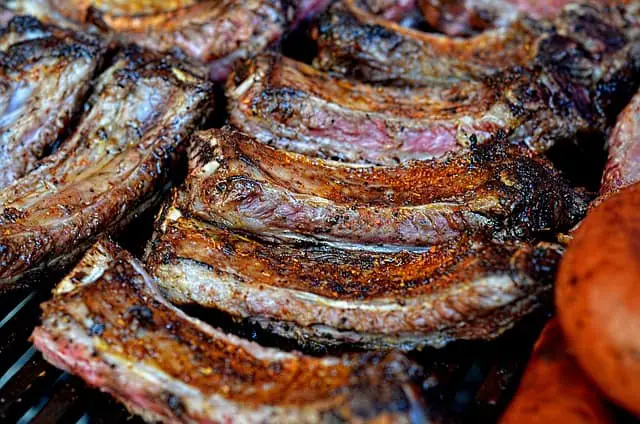Pohutukawa wood is a popular wood choice for smoking meat and other foods in New Zealand. Its unique flavor profile and aroma make it an excellent option for adding a rich, smoky taste to your favorite dishes.
In this blog post, we will explore how to use pohutukawa wood for smoking meat and other foods, including the best meats and foods to smoke with it, and how to use the wood for maximum flavor.
The Benefits of Using Pohutukawa Wood for Smoking
Pohutukawa wood has a unique flavor profile that is both sweet and smoky, making it ideal for smoking meats and other foods. It provides a unique and distinct flavor profile with hints of sweetness and floral notes, enhancing the taste of the smoked dishes.
Secondly the wood burns slowly and evenly, producing a consistent temperature and smoke output. It burns efficiently, producing a steady and consistent smoke, allowing for precise control over the smoking process.
Lastly, Pohutukawa wood is native to New Zealand, making it readily available in the region and promoting the use of local and sustainable resources for smoking food.
Best Meats and Foods to Smoke with Pohutukawa Wood
Pohutukawa wood pairs well with a variety of meats, including beef, lamb, pork, and chicken. It also works well with seafood, such as salmon and tuna.
Other foods that can be smoked with pohutukawa wood include cheese, vegetables, and even fruit. The wood’s unique flavor profile can add depth and complexity to any dish.
There are also many popular meat dishes that can be smoked with pohutukawa wood, including:
- Beef brisket
- Pulled pork
- Ribs (pork or beef)
- Chicken wings
- Whole chicken
- Salmon
- Tuna
- Sausages
- Ham
- Venison
These meats can be smoked using different methods, such as hot smoking or cold smoking, and can be seasoned with different rubs or marinades to enhance the flavor.
Pohutukawa wood can add a sweet and smoky flavor to all of these meats, creating a delicious and unique taste that is sure to impress.
How to Use Pohutukawa Wood for Smoking
To use pohutukawa wood for smoking, start by seasoning and drying the wood. This will ensure the best flavor and smoke output. You can do this by leaving the wood in a dry place for several weeks, or by using a dehydrator. Once the wood is dry, it is best to soak it in water for at least 30 minutes before use. This will prevent the wood from burning too quickly.
Pohutukawa wood can be used in a variety of smokers, including charcoal and gas smokers, as well as traditional wood-burning smokers. To use the wood, start with a small amount and gradually add more as needed to achieve the desired flavor.
It is important to monitor the temperature closely to ensure that the wood is burning evenly and not producing too much smoke.
Tips for Achieving the Best Flavor with Pohutukawa Wood
To achieve the best flavor when smoking with pohutukawa wood, it is essential to use the right amount of wood and control the temperature. Start with a small amount of wood and gradually add more as needed to achieve the desired flavor. If you use too much wood, it can overwhelm the dish and produce an acrid flavor.
Monitor the temperature closely to ensure that the wood is burning evenly and not producing too much smoke. The ideal temperature range for smoking meat and other foods is between 225 and 250 degrees Fahrenheit. If the temperature is too low, the meat may not cook properly, and if it is too high, the wood may burn too quickly and produce too much smoke.
Final thoughts
Using pohutukawa wood for smoking meat and other foods is a great way to add a unique flavor profile to your favorite dishes. By following these tips and experimenting with different meats and foods, you can create delicious, smoky flavors that will impress your family and friends.
Whether you are a seasoned smoker or a beginner, pohutukawa wood is a great choice for adding depth and complexity to your cooking.
You can also check out article titled What is the Pohutukawa Tree to learn more about this unique and historic New Zealand tree.


